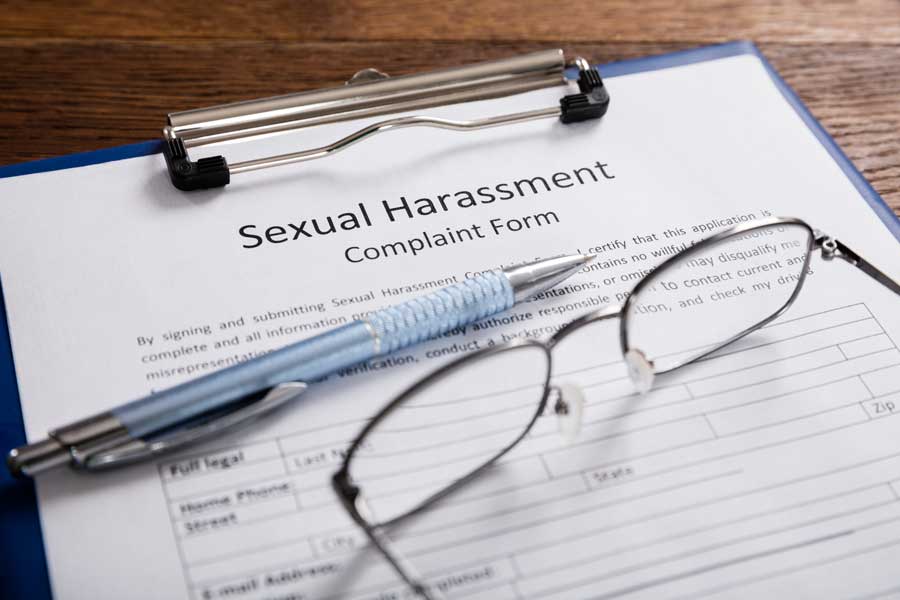Blog
Employment Liability Claims: Three Simple Steps to Avoid Unnecessary Friction
As I noted briefly in my most recent post about litigation trends, sexual harassment in the workplace is now a board-level issue. In light of this trend, this is a good time to take a moment to review how claims work for Employment Practices Liability Insurance. My colleague, Scott Goettelman, a management liability claims expert in Woodruff Sawyer's Denver office, provides a timely reminder in today's post.
-- Priya
The #MeToo movement—the social media movement against sexual misconduct that has toppled prominent politicians and celebrities—is also a force in business.
Of course we all hope that our own companies do not experience these issues. The best companies include women and people of color on their leadership teams, something that many agree tends to discourage the type of behavior that launched the #MeToo movement. There are numerous other steps that commentators and others have recommended such as implementing a sexual harassment policy, trainings, and creating reporting procedures.
But what happens if you get hit with the scenario you had hoped to avoid? You receive a letter from a lawyer retained on behalf of one of your employees asserting claims of sexual harassment, gender discrimination, and retaliation—each of which are alleged violations of state and/or federal law—against a member of the executive leadership team (or any other employee for that matter). The letter contends the employee has viable, strong claims; indicates this employee is not the only one who allegedly has been subject to similar misconduct; and, gives the company an alternative to litigation.
You start to devise an action plan designed to take the complaint seriously. You likely call outside counsel to discuss the need to conduct an internal investigation and what that will look like. You probably get the ball rolling pretty quickly... and possibly forget altogether that your company had purchased an Employment Practice Liability Insurance (EPLI) policy.
A Brief Overview of EPLI Policies
EPLI policies are fairly standardized and cover common employment-related risks such as wrongful discharge or discipline, employment discrimination, sexual harassment, violation of state and federal statutes designed to protect employees, negligent compensation, promotion or hiring decisions, and other claims arising from the employment relationship.
EPLI policies are typically claims-made, and only cover those claims which the insured knew or should have known and for which the insured promptly provides notice to the insurance carrier during the policy period.
The definition of "claim" in an EPLI policy often includes EEOC proceedings. This is significant because receipt of an EEOC charge of discrimination will often trigger the insured’s notice obligations under an EPLI policy. If the insured waits until the employee files suit, the insured may face a late notice defense that could compromise coverage. Similarly, an email from an employee complaining about a hostile work environment, bullying or disparate treatment, will often initiate the policy’s reporting requirements.
Generally, if you receive something in writing from a past, current or potential employee claiming your company and/or employee(s) acted unlawfully and that the claimant has been damaged as a result, these allegations may constitute a claim under your EPLI policy.
You should report a claim as soon as possible. This means that as soon as you become aware of a claim, report it. When in doubt, call your trusted insurance broker to discuss the matter.
Avoiding Friction in the EPLI Claims Process: 3 Simple Steps
We’ve heard far too many horror stories where insureds neglect or forget to look at their EPLI policy and proceed with internal investigations; hire lawyers to defend the claim; ultimately settle the claim on their own; and then, only after the fact, learn the hard way that they didn’t follow their EPLI policy's rules and the insurance carrier is refusing to "play ball." Now there's bad blood and unnecessary friction added to an already stressful claim. It can feel like the insurance carrier is throwing salt in the wound.
You can lessen the friction that has haunted other insureds and set yourself up for a much more collaborative and smooth EPLI claim experience, if you follow three simple steps:
- Notice the claim in a timely way.
- Make sure the insurance carrier consents in writing to your choice of defense counsel.
- Make sure the insurance carrier is involved in settlement negotiations from the outset, and ultimately agrees to any settlement.
These three simple steps will make a world of difference to your claim experience. I will discuss each in turn.
Timely Notice.This seems obvious, and is often missed. For example, sometimes Human Resources is the first stakeholder to find out about a potential issue, and no one has flagged the need to check in with whomever handles insurance when such an occasion arises. Consider who is likely to receive notice of this type of potential complaint, and make sure those folks know to contact whomever at the company is tasked with working with your insurance broker.
Choice of Counsel. EPLI policies are either duty to defend (the insurance carrier hires counsel on the insured’s behalf to defend a claim) or non-duty to defend (the insured hires their own counsel with the insurance carrier’s consent to defend a claim). Be mindful that some policies have a panel counsel requirement, which means the insured needs to select a lawyer from the insurance carrier’s list. Importantly, if you don’t get the insurance carrier’s prior consent to hire a lawyer, you may be heading towards choppy waters. For instance, the insurance carrier may try to snub your choice of counsel after they’ve already commenced work, or balk at what is a “reasonable” hourly billing rate. Changing lawyers in mid-stream or learning you’ll need to pay the difference between the rate the insurance carrier deems “reasonable,” and the rate you agreed to pay, is frustrating for insureds.
Settlement Negotiation. With few exceptions, EPLI policies require that your insurance carrier give consent before you settle a matter. Many policies require that you get your insurance carrier’s consent before even entering into a negotiation to settle a claim. In other words, if there is even a possibility that you want to settle a claim, ask your insurance broker to call your insurance carrier immediately so that you can discuss the situation.
What happens after you report an EPLI claim?
The claim process of an EPLI claim varies depending on the nature of the claim, and generally includes the following steps:
- Acknowledgment. The insurance carrier will send a letter or email to acknowledge receipt of the claim, and may provide a claim number and contact information of the assigned claim professional in the insurance carrier’s organization.
- Information gathering and investigation. The insurance carrier’s claim professional will begin the investigation into the matter. During this process, you may receive communications requesting additional information to assist in the investigation of the claim.
- Coverage determination. The insurance carrier will send you a letter that outlines the coverage available under the policy, and applicable exclusions. The letter describes how the claim will be handled, and may also explain why a matter does or does not fall within the coverage provided.
- Resolution. The insurance carrier claim professional will work directly with you and the attorney representing your company, to achieve a timely and efficient resolution of the claim.
Setting Yourself Up for Success: Your EPLI Action Plan
Now that you have a better grasp on the rules of the road, let's go back to the moment you read the lawyer's letter... what should be in your action plan? From an insurance perspective you’ll want to:
- Get a copy of your EPLI policy from the responsible person at your company (and, ideally, read it).
- Call your insurance broker to talk about the claim, and get a briefing on how the policy works.
- Discuss who will notice the claim and the timing. Do you want your broker to handle this? Do you want to handle this yourself? Or do you want to have your outside counsel handle this with a copy to your broker? We typically recommend that your broker handle the mechanics of noticing the claim.
- Discuss whether the policy is a duty to defend policy. If it's a non-duty to defend policy, discuss whom you want to hire as defense counsel, including hourly rates if available.
- After noticing the claim to the insurance carrier and obtaining consent to retain counsel, keep the insurance carrier updated throughout the claim life cycle.
- Be sure to get the insurance carrier involved at the first hint of settlement irrespective of whether it’s you or the claimant who first broaches the topic.
Of course, it's not always that simple or straightforward of a process. However, following a few simple rules will go a long way to put the claim on a successful path towards resolution and reduce unnecessary friction with your EPLI insurance carrier.
Author
Table of Contents













